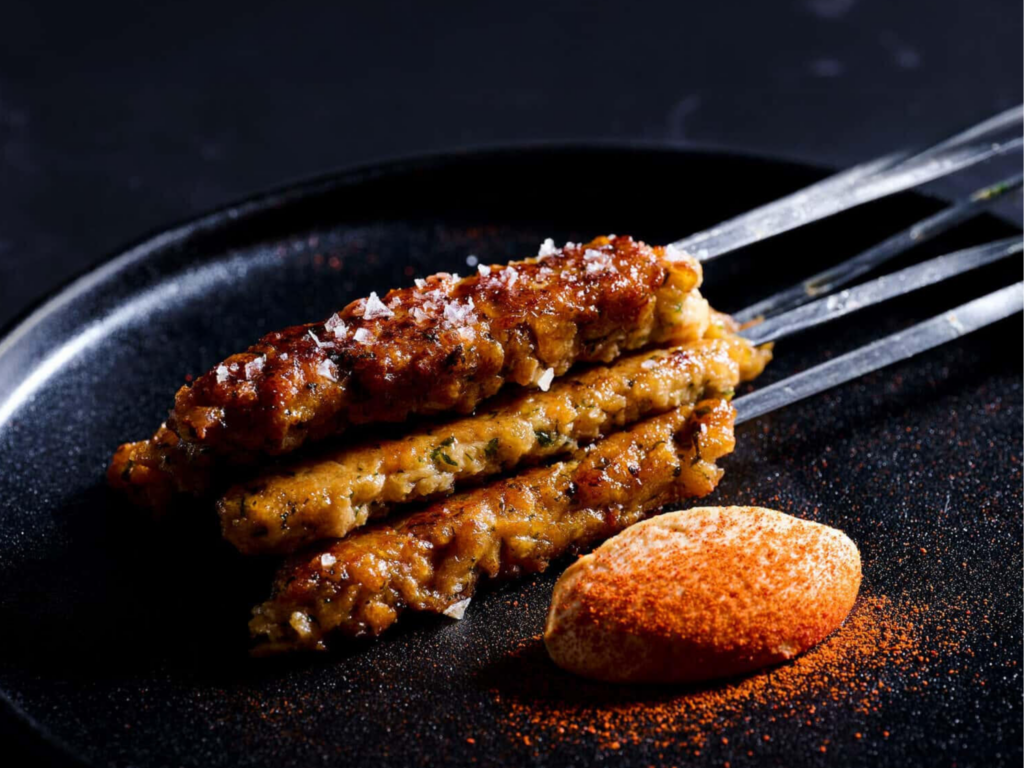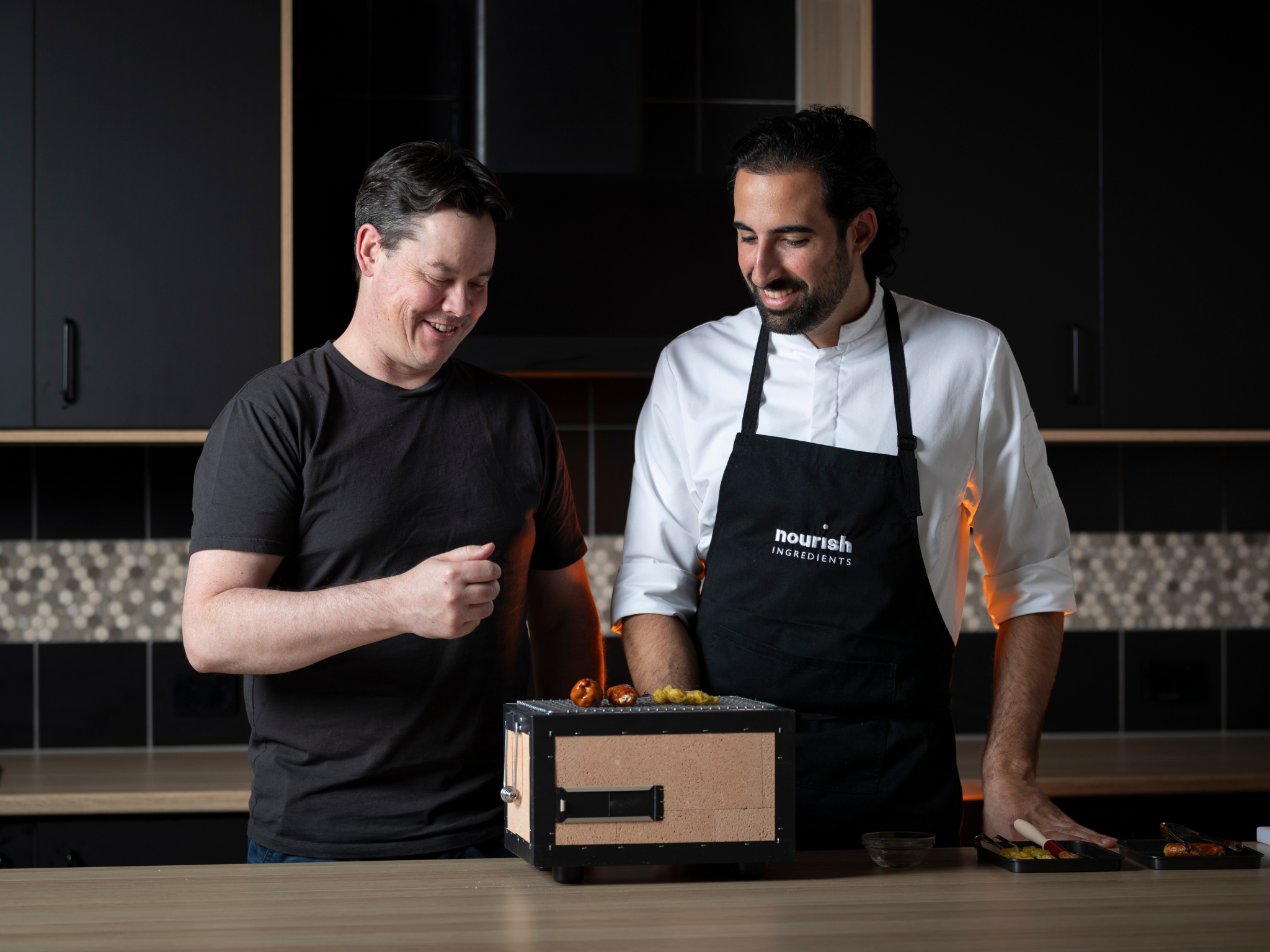How This Animal-Free ‘Designer’ Fat Maker Is Reshaping Future Food Economics
6 Mins Read
Australian firm Nourish Ingredients has completed an industrial-scale production of its animal-free, meat-like fat while keeping costs low – here’s how it’s doing it.
Six months after forming a partnership with Chinese fermentation specialist Cabio Biotech, Nourish Ingredients has achieved a production milestone for its precision-fermented fat ingredient.
The Canberra-based startup has completed the first industrial-scale manufacturing cycle of its meaty ‘designer’ fat, Taxtilux, enough to meet 170,000 tonnes of end-product demand.
This represents a 1,700% increase in Nourish Ingredients’s capacity, and the firm claims it is the first alt-fat company to reach commercial-scale validation while maintaining low costs.
Precision fermentation combines traditional fermentation with the latest biotech advances to efficiently produce a compound of interest – in this case, an animal-free fat designed to improve the taste, aroma and cooking experience of meat analogues.
“We’re able to produce our final product from start to finish by tapping into Cabio’s existing fermentation capacity,” Nourish Ingredients CEO James Petrie tells Green Queen.
“Cabio already produces a fat for infant formula using the same microorganism behind Tastilux, a fungal strain naturally found in soil. By leveraging their infrastructure, our intellectual property and tech, we’re able to accelerate our path to commercial scale. It’s a true win-win.”
Just 1% of Tastilux can transform meat alternatives

Cabio has been supplying functional ingredients for over two decades and owns one of the world’s largest factories for long-chain polyunsaturated fatty acids. The partnership, announced last November, will leverage the Chinese firm’s facilities and expertise to efficiently produce Tastliux with minimal waste.
“Our manufacturing approach leverages fermentation technology, which allows us to produce these specialised fat molecules efficiently and consistently,” says Petrie. “We’ve achieved our current scale through strategic partnerships that combine our intellectual property with established production capacity.”
A key factor behind its scale-up and cost efficiency is the low inclusion rate of its fat. “Our research has consistently shown that our products can significantly increase animal-like authenticity in flavour, mouthfeel, and aroma with an inclusion rate as low as 1%,” reveals Petrie.
“This means we don’t need massive production volumes to significantly impact the finished product, which considerably reduces the scaling challenges typical in our industry. Our process is designed specifically for efficiency and minimal capital expenditure while maximising output quality, allowing us to reach commercial scale much faster than alternative approaches,” he adds.
“We’ve found global manufacturers are surprised when they discover they are achieving such an authentic meaty perception with just a 1% inclusion level. This efficiency means food manufacturers can dramatically improve their products while keeping their costs manageable, which has been a crucial factor in our strong market interest.”
Tastilux ‘hits the sweet spot’ on pricing

Tastilux relies on naturally occurring lipids scaled through precision fermentation to provide the distinct flavour and cooking properties of meat fats when used in plant-based chicken, beef, pork and other alternatives.
While commodity plant fats like coconut or palm oil are cheaper in absolute terms, Petrie argues they “lack the taste and functionality” Nourish Ingredients’s fats provide, and their link to deforestation can make them a climate nightmare.
“They are often also mixed with complex and expensive flavour solutions, which can contain up to 30 ingredients, including synthetic chemicals and lack an authentic animalic taste,” he adds.
Meanwhile, cultivated fats derived from cell lines – soon to be commercialised by the likes of Mission Barns and Mosa Meat, among others – are “significantly more expensive and less customisable”.
“Our approach hits the sweet spot – we produce the same molecules found in animals but through precision fermentation, allowing us to optimise the flavour and cost. The key economic advantage is our low inclusion rate – at just 1%, food manufacturers can dramatically improve their products while keeping their overall costs manageable,” says Petrie.
“Our precision fermentation process creates a cost structure that’s competitive when you consider the impact-to-inclusion ratio,” he adds. “This low-volume, high-impact approach means we can achieve commercial viability much sooner than alternatives that require higher inclusion rates.”
Nourish Ingredients eyes global markets

According to Petrie, interest in Tastilux has been “exceptional”, with the company’s research showing that incorporating Tastilux in plant protein increases people’s purchase intent and preference. This should come as no surprise – fat is the main driver of flavour and texture, two of the biggest consumer pain points for meat alternatives.
“We’re working with several global food companies who are excited about how our product unlocks flavours previously unavailable to them,” he says.
This first batch of Tastilux is being shipped across three continents, in line with Nourish Ingredients’s “multi-region strategy” for regulatory approvals. It has identified the US and Singapore as its initial focus, with an eye on Australia, the UK, and the EU too.
“Our strategy prioritises markets where there’s strong demand for our products and relatively clear regulatory pathways to commercialisation,” explains Petrie.
Singapore is an important market for the firm, “given its leadership in alternative protein innovation and strong government support for food technology”. The company is in the middle of regulatory assessments in the city-state there, a process that takes 12-18 months.
“Our go-to-market strategy focuses on partnering with established food manufacturers who can leverage our ingredients effectively,” Petrie says. “We’re taking a collaborative approach, working directly with potential customers to fine-tune flavour profiles that resonate with local preferences.”
Food tech ‘funding winter’ has shifted investor priorities

Nourish Ingredients has raised A$40M ($24M) to date, allowing it to develop the tech platform and reach the pre-commercial stage.
“Now we’re operating in what I’ve previously called a ‘food tech funding winter’, where investors have shifted focus from potential to tangible paths to revenue and offtake deals, which means our focus has been on commercial agreements,” notes Petrie.
“What differentiates us in this challenging investment landscape is our capital-efficient approach. Our low-inclusion-rate products significantly reduce the scale-up capital required compared to other precision fermentation companies,” he adds.
“Any future capital will be targeted at sales and commercial adoption with major food companies, many we’re already engaged with.”
The company is also working on Creamilux, a similar alternative for non-dairy applications. It has teamed up with New Zealand dairy giant Fonterra to create both dairy and plant-based products with the ingredient.
This comes during a time when the alternative fat sector is booming. Like Nourish, California’s Yali Bio, New York’s C16 Biosciences and Sweden’s Melt&Marble use precision fermentation to produce fats and lipids, while Hoxton Farms, Steakholder Foods and Genuine Taste employ cell cultivation. Bill Gates-backed Savor, meanwhile, is fermenting carbon to produce animal-free butter.



